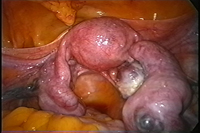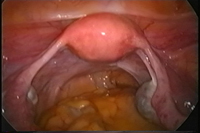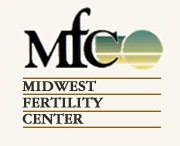Fimbrioplasty for Tubal Factor Infertility
For Tubal Factor Infertility, Laparoscopic Neosalpingostomy / Fimbrioplasty is one of the surgical treatments we can perform at Midwest Fertility Center, restoring a woman’s fallopian tubes and her ability to become pregnant.
Neosalpingostomy is a procedure in which a woman’s fallopian tubes are surgically repaired to reverse tubal factor infertility and allow pregnancy to occur.
Fimbrioplasty refers to the reconstruction of the fimbria, the portion of fallopian tube tissue near the ovary that serves to sweep the egg into the fallopian tube.
If you have been advised that you have tubal factor infertility, that your fallopian tubes are blocked, that you have a hydrosalpinx or other tubal damage, and are thinking about undergoing IVF, first contact the staff at Midwest Fertility Center to schedule a consultation to see if Laparoscopic Neosalpingostomy / Fimbrioplasty may be a better choice for you.
- History
- Laparoscopic Neosalpingsotomy / Fimbrioplasty
- Results


History
The introduction of In Vitro Fertilization – Embryo Transfer (IVF-ET) resulted in a worldwide decline of tubal reconstructive surgery.
A “why bother” attitude towards surgery has unfortunately resulted in scores of patients not being given the chance to achieve pregnancy through more traditional, cost-effective, and highly successful treatments.
Couples that cannot afford the expense and time commitment required by IVF are often left without any options.
The nearly exclusive use of IVF-ET has also resulted in generations of young physicians not being trained or exposed to basic and very useful surgical techniques.
Laparoscopic Neosalpingsotomy / Fimbrioplasty
Dr. Madanes’s experience over the last 25 years with both IVF-ET and tubal reconstructive surgery has definitely taught that the first approach to tubal factor infertility should be surgical, at which time the tubes can be either repaired or removed.
There is no benefit to leaving behind non-functioning tubes, which can decrease the success rate of IVF-ET attempts and possibly lead to serious complications.
Neosalpingostomy/fimbrioplasty, preferably through laparoscopy, should be the first treatment choice for cases of hydrosalpinx, a condition wherein the fallopian tubes are blocked at the distal (ovarian) end and filled with serous (clear) fluid, commonly leading to infertility.


Results
Laparoscopic neosalpingostomy/fimbrioplasty, in properly selected cases, consistently produces pregnancy rates that equal or exceed those attained by IVF-ET.
Our group is now approaching a 50% pregnancy rate, and contrary to traditional teachings, most of these take place within the first few months following surgery.
Because of the success rate and cost-effectiveness of this procedure, we believe that the preferred choice for the management of infertility secondary to fimbrial occlusion should be Laparoscopic Neosalpingsotmy / Fimbrioplasty.
For more information about this effective surgical treatment for fallopian tube blockage or about tubal factor infertility, or to schedule a tubal reconstruction consultation, please contact Midwest Fertility Center today.
